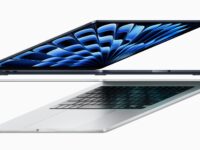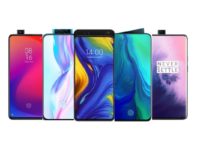Cellphones over the years have grown beyond wireless telephone devices. Back in the early days, it was conceived as a communications device, but did we truly expect to pack in so much power? Today a mobile phone has rendered your wrist watch as just another accessory, for most people it has eliminated the use of a point to shoot cameras and made us more productive when traveling than ever before. Each passing year the capabilities of this little gadget keeps increasing and has rightly fetched itself tags like ‘smartphone’ and ‘mobile computer’.
Last weekend I had the opportunity to play with a bunch of NFC phones, including a range of upcoming Nokia devices. While we have been hearing and talking about NFC for a long time, this was the first opportunity we had to experience it live.

NFC (or Near Field Communication) isn’t a new phenomenon. It has been around in different forms around us for ages. Be it a metro card or an access card issued by your employer. But as this technology makes it to smartphones, a totally new set of possibilities come into the picture. Combine the deep penetration of smartphones / mobile phones, NFC can be the converging point for many systems. Add to that the pool of smart developers innovating in the mobile space and we realize that this might just be the tip of the iceberg that we are seeing.
Google has already made the first move with ‘Wallet’ and we can expect others to follow suit. In India smartphones like the Nexus S are already retailing with NFC enabled and others like the Galaxy SII at least has the feature on its press release. Whatever may be the penetration at the moment, we know that more and more manufacturers are keen on bringing NFC to their devices. Nokia is all set to unveil its first NFC enabled phones in India next month (the 700, 701 & 600).
When demoing NFC we saw a Bluetooth headset pairing with a phone by just tapping the two together, a simple tap on a speaker to transfer the music output from the phone to the speaker. In both these cases the handshake happens via NFC and the transfer is initiated by Bluetooth. We also saw NFC tags that work just like a QR code and allows a quick piece of data to be transferred, be it a contact card or just a link pointing towards an app.
NFC is in its early days, the speaker we tested worked well with a Nokia but refused to sync with a Nexus S, perhaps just a prototype, but this raises the fear or fragmentation in our minds. Bluetooth had its hiccups in early days, WiFi wasn’t used as widely from the first day of its launch on mobile devices and there is no reason why NFC would be any different. Developers are accustomed to developing for multiple platforms when it comes to apps, but with NFC, we better think more on the lines of Bluetooth and WiFi which are established standards and not a feature restricted to any manufacturer or OS. When looking at the Nokia-Windows Phone deal we had pointed at the evolving platforms race and manufacturers might well see NFC as an opportunity to go beyond apps.
Mobile platforms like Android, iOS and Symbian have hundreds of millions of users and integrating them with NFC applications in the real world can be a tremendous leap ahead. Imagine if your smartphone automatically talks to your motorbike and changes the caller tune of your mobile to warn callers that you are riding a bike? Or your mobile phone replacing the metro pass and access cards that you carry? Clearly the possibilities would be best explored by developers in the real world, with users being equipped with NFC devices. And this can’t happen overnight.
For now the upcoming Nokia 700, 701 and 600 along with the Nexus S are early adopters of NFC. A year or two later as NFC goes mainstream (and assuming the technology would be a success) we would remember these devices as the starting point of a new chapter in mobile revolution. Our only wish is that the players in this ecosystem play it together!
Pictured above, @lordswap flaunting his NFC tatoo





